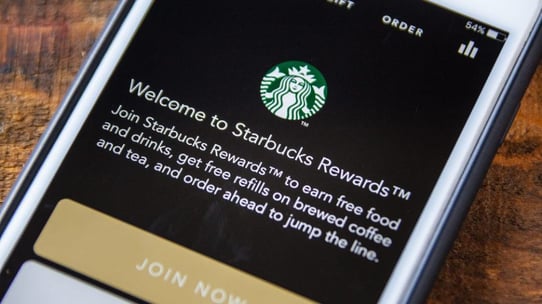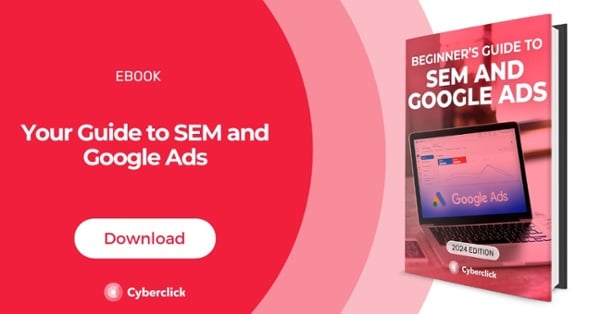By Laia Cardona, on 6 April 2023
An advertising strategy is an action plan designed to increase sales of certain products or services, attract new customers, and invite existing ones to make multiple purchases--things that are essential to any brand.
An advertising strategy is part of a brand's marketing plan, so it must be aligned with the company's objectives. It is also essential to consider branding, tone, and brand identity so that the user experience does not have dissonant elements.
Content advertising, pull advertising, and push advertising are the three main types of advertising strategies that we will be taking a look at today, along with 10 examples that you can apply in your company.
There are many possible advertising strategies, as each brand's situation, identity, and objectives are unique. To get an idea of the possibilities, let's take a look at how HubSpot classifies the 3 major types of advertising strategies.
1. Content Advertising
This advertising strategy seeks to directly influence consumers through different channels with a direct, clear message that aims to reach as many people as possible.
Although it has similar characteristics to content marketing, it is not the same since it is more direct and more focused on the brand.
Within content advertising, we can distinguish the following different subtypes:
Informative Advertising: This focuses on showing the brand and the value it can bring to potential customers. It is usually based on rational values.
Comparative Advertising: This focuses on comparing a brand with the competition, in order to reinforce the characteristics that differentiate it and convince the consumer that it can provide greater benefits. Although this can be very effective, you must be very careful when making your claims in order not to run into legal problems.
Emotional Advertising: If informative advertising is based more on rational factors, emotional advertising seeks to get an emotional reaction. It can be very effective in influencing purchasing decisions since we know that these have a strong subconscious component that is based on how people feel about a product or service.
2. Pull Advertising
This advertising strategy is typical of brands that are already well-known and well-positioned in the market. Instead of going after customers, this strategy aims to keep a brand in the consumer's mind and propel people towards it. It focuses on identification with the brand and long-term loyalty.
3. Push Advertising
This advertising strategy is more suitable for new products or services since it seeks to make something known among consumers to position well and generate sales.
The push strategy can use different channels, from traditional media to social ads. In many cases, it goes hand in hand with pricing strategies. For example, offering cheaper launch prices to generate an initial critical mass of consumers.
It is also common for push advertising to be done in tandem with content marketing so that a new brand can establish its authority early on and position itself as an expert in its sector.
15 Examples of Advertising Strategies
Let's take a look at some of the most widely used and effective advertising strategies according to PPCExpo and other experts in marketing and advertising.
1. SEM
Paid advertising on search engines (SEM) such as Google consists of positioning ads targeted to certain keywords. This way, when someone searches for a term related to your brand, your ad can appear in a prominent position among the results.
SEM is one of the most popular advertising strategies in the digital environment, as it allows you to directly target those with a high purchase intent based on their searches. In addition, it is a very versatile strategy, as it allows you to reach very different audiences at different stages in the buying process.
.jpg?width=624&height=356&name=SEM_Picture3%20(1).jpg)
2. Social Ads
This advertising strategy consists of placing paid ads on social networks, usually through a pay-per-click model.
What makes this work well are the great targeting possibilities. Keep in mind that social networks have large amounts of data on their users, so you can segment very specific audiences based on factors such as their lifestyle or interests.
In addition, you can also use these platforms to get in touch with users who already know your brand (by importing your databases or installing a data pixel) and to create audiences similar to your visitors, leads, or customers, so that you only target the users who are most likely to convert.
3. Amazon Advertising
Amazon ads offers pay-per-click advertising with some unique advantages. For instance, Amazon has a wealth of information about its users' shopping preferences. Above all, this platform allows you to place ads right where and when users are most likely to make a purchase, which results in higher conversion rates.

4. Email Marketing
Email marketing is an advertising strategy that has maintained effectiveness over the years by reinventing itself over and over again. According to some studies, the ROI of this channel is close to 40 dollars for every dollar invested.
In addition to its spectacular ROI, another great advantage of email marketing is that it can be adapted to all types of situations, brands, and campaigns, from the first steps of lead generation to long-term loyalty. No wonder it is one of the preferred advertising strategies for brands!

5. Native Advertising
Native advertising is a format that consists of placing paid content on various platforms that adapt in form and function to the environment in which it appears. Although it must be clearly marked as advertising, it is integrated into its context in a much less intrusive way than other formats (such as banners). It also provides valuable content to users, which leads them to consume it voluntarily.
6. Influencer Marketing
Influencer marketing is an advertising strategy that relies on the authority of those with a strong presence on social media to promote a product or service to their followers.
Previously, there was a tendency to value the number of followers that a person had above everything else and campaigns were created for the widest possible dissemination. Now the trend is to value the level of interaction more and look for experts in niches with smaller audiences (microinfluencers).
7. TV Ads
Television advertising, particularly during high-profile events like the Super Bowl, is a strategy that leverages massive viewership to increase brand visibility and consumer engagement. This year, for instance, Super Bowl LIX had more than 127 million viewers across all platforms, making it the most-watched non-news television broadcast in U.S. history.
The effectiveness of Super Bowl advertising lies in its ability to reach a diverse and engaged audience. Notably, 43% of consumers watch the Super Bowl specifically for the advertisements, highlighting the event's unique position as a platform where commercials are an integral part of the viewer experience.
8. Contests
Similar to discounts and promotions, contests or giveaways serve to generate interaction and attract interest in a brand in the short term.
While this is a strategy that brands have been using for a long time, it has experienced a recent boost thanks to social networks. Many brands create contests and giveaways on platforms like Instagram or TikTok to increase their follower base and level of engagement. Of course, these events must always be framed within the broader objectives of the brand.
9. Guerrilla Marketing
Guerrilla marketing is one of the most original and innovative advertising strategies. It is based on the use of unconventional techniques to achieve maximum diffusion at a low cost. Creativity is a fundamental element to achieving surprise and impact with minimal resources.

10. Loyalty Programs
Loyalty programs are an advertising strategy that is not aimed at getting existing customers to repeat their purchases frequently and even become brand ambassadors.
There are different types of loyalty programs, such as points or tiered programs. In all of them, the objective is to generate a long-term relationship between a customer and a brand and improve the customer lifetime value. This term refers to the amount of profit generated during the time someone remains with a brand. In turn, this allows brands to reduce the cost of acquiring new customers.

11. Video Advertising
Video advertising is a strategy that focuses on reaching audiences through engaging video content. These ads can appear on platforms such as YouTube, social media channels, streaming services, or even in-app videos on mobile devices.
One key benefit of video ads is their ability to capture attention and convey a message in a short amount of time. With features like skippable ads, interactive elements, or autoplay, businesses can engage viewers effectively. Additionally, video ads can be targeted based on user behavior, interests, or demographic data, making them highly relevant and personalized.
12. Product Placement
Product placement is a strategy where brands integrate their products or services into movies, TV shows, or other types of content. These products are often featured naturally within the storyline, making them a seamless part of the content experience.
One key advantage of product placement is its ability to reach viewers in a non-intrusive, as the brand is subtly embedded within the entertainment they are already enjoying. This technique also builds brand awareness and credibility, as consumers often associate the product with popular characters or moments in the content. Product placement can be particularly effective when the product aligns well with the themes or lifestyles portrayed in the media.
13. Mobile Ads
Mobile advertising is a strategy that focuses on reaching people via mobile devices like phones or tablets. These ads can appear in a wide variety of places online from websites and social media platforms to various online games or gaming platforms.
Another advantage of these ads is that, if the user has their location enabled on their device, businesses that are near their current location can reach them with targeted ads. Mobile ads and promotions can also be activated through QR codes that people can scan with their devices.
.jpg?width=425&height=425&name=mobile-ad%20(1).jpg)
14. Programmatic Ads
Programmatic advertising is a strategy that uses automated technology to buy and place digital ads in real time through an auction system. These ads are targeted based on various factors like user behavior, demographics, location, and interests.
One key benefit of programmatic ads is their efficiency, as advertisers can reach the right audience at the right time without manual intervention. This system allows for highly personalized ads, optimizing ad placements based on real-time data. Additionally, programmatic ads offer detailed tracking and analytics, allowing businesses to measure performance and adjust their campaigns for better results.
15. Podcast Ads
As podcasts continue to grow in popularity, more and more brands are advertising on podcasting platforms. Typically, brands have their ad read out by the host of the podcast they'd like to be featured on. While this may sound straightforward, it's important to keep in mind that hosts often have a high level of trust with their audience, so having them promote a product or service can be more effective than a standard ad.
In addition, many brands let hosts ad-lib while reading the advertisement. This allows hosts of comedy podcasts to create funny, entertaining ads. Other types of hosts may recount their personal experiences with the sponsor's product or service, making the ad more compelling and less salesy.
Lastly, brands often provide podcast hosts with a discount code not only so that listeners can get a deal but also to allow the brand can track how successful the collaboration is.
What type of advertising is the most effective?
The most effective type of advertising depends on your goals and audience. Pay-per-click (PPC) and social media ads, especially those with precise targeting, offer great returns. PPC targets users actively searching for solutions, while social media ads build brand awareness and engagement.
What are the 7 methods of promotion?
The 7 methods of promotion are direct marketing, sales promotion, digital marketing, personal selling, advertising, public relations, and sponsorships. Each plays a unique role in boosting brand awareness, driving sales, and building customer relationships.
What are some advertising strategies for kids?
Use bright colors, fun characters, and interactive content. Keep messages simple, positive, and age-appropriate. Kids respond well to engaging visuals and storytelling, Make it playful and parent-approved to build trust and interest.
What are the 5Ms of advertising?
The 5Ms of advertising are mission, money, message, media, and measurement. They guide strategy by defining goals, setting budgets, crafting messages, choosing channels, and tracking results to boost impact and ROI.
What is the fastest growing type of advertising?
Social media advertising has been the fastest-growing form of online advertising in recent years. Platforms like Facebook, Instagram, and TikTok have experienced significant increases in user activity, providing businesses with expansive opportunities to connect with their target audiences.


